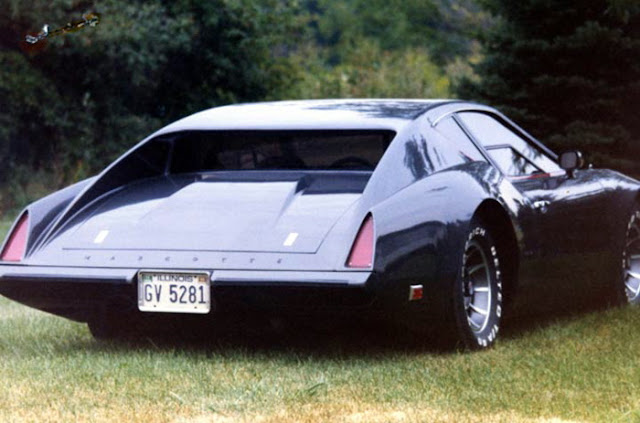Bob van Niekerk and Willie Meissner started Glassport Motor Company (GSM) in Cape Town, South Africa in 1958. However the story began in the UK, where Willie Meissner discovered the growing cottage industry of fiberglass bodied sportscars. Thus inspired, he produced the original molds for a car that would become the GSM Dart in the UK. The first body produced was offered for sale, with the proceeds used to finance the shipment of his tooling to South Africa.
On January 1, 1958 the prototype GSM Dart made its racing debut at Gunners’ Circle in Cape Town. The Dart was equipped with the Willment OHC conversion on the side-valve 1172cc 100E Ford Engine. By the end of 1959, 41 further Darts had been produced and sold to race enthusiasts.
Ironically, GSM struck a deal with some partners in the UK to produce the design, under license, at a factory in Kent. The first prototype was built in 10 days, with the UK partners putting up money for the parts required. The resulting prototype competed in 1960 at the Brands Hatch’s Easter Races, with Bob van Niekerk at the wheel, and not only finished the race but won the 1000cc class.
 |
| The GSM Dart, with its removable hard-top |
The subsequent cars featured a variety of engines including the 1500cc Coventry Climax and Ford Anglia 100E and 105E units, fitted to a ladder frame chassis. The suspension consisted of transverse leaf springs at the front, which helped to lower the car's center of gravity, and coil springs at the rear.
The initial series were open two seaters, which were followed by a hardtop version at a later date. The hardtop had a Ford Anglia style reverse raked rear window. As it turned out, the “Dart” name couldn’t be used in the UK because it was trademarked by Chrysler (for a Dodge model), so the name was changed to “Delta”.
 |
| The GSM Dart |
116 GSM Darts were produced in South Africa before production ceased in 1964. However, the UK operation ended in 1961 in part due to bad press. Criticism regarding fit and finish, as well as pricing dampened interest in the cars. 35 were sold.
The Flamingo coupé was introduced by GSM in 1962. Their original plan was to use a Ford V6 but, as that motor was not available initially, a 1.7-litre Ford Taunus engine was used while later models would get the 1.5-litre Ford Cortina engine. The coupe employed a similar method of construction to its Dart sibling, with a tubular steel frame bonded to the bodywork.
 |
| The GSM Flamingo coupe |
Both cars were penned by South African designer, Verster de Witt. The Flamingo had rather adventurous styling, somewhat inspired by the Bertone/Alfa Romeo B.A.T. series of cars. At rear, it has abbreviated fender fins and a central fin that divides the rear windows. Notable fans of the coupe include Gordon Murray, creator of the McLaren F1, who owns a red one residing among his eclectic collection of lightweight sportscars. 130 Flamingos were produced in total, including a prototype version with a 3.7 Liter Ford V-8!
GSM ceased trading in 1966 but an active Owners Club remains for enthusiasts and owners alike. The car is considered a classic in South Africa and, historically speaking, GSM were among the pioneers of fiberglass car manufacturing there. With their distinctive styling, competence on the racetrack, and nimble performance the Dart and Flamingo are worthy of note. After all, if they impressed a perfectionist like Mr. Murray, that says a lot.
 |
| The GSM Flamingo, at rear |
Sources:
FB Page of the GSM Car Club of SA
Classic and Recreation Sportscars  |
| The GSM Dart, with its interesting hard-top |
 |
| The GSM Dart. front corner |
 |
| The GSM Dart, in racing trim |
 |
| The GSM Dart racer, at rear |
 |
| The GSM Dart racer engine bay |
 |
| The GSM Dart dash binnacle |
 |
| The GSM Dart, with a Flamingo coupe at left |
 |
| The GSM Dart and Flamingo coupe |
 |
| GSM Darts in various trim |
 |
| The GSM Flamingo |
 |
| The GSM Flamingo engine bay |
 |
| The GSM Flamingo, front quarter |
 |
| The GSM Flamingo's B.A.T. inspired rear styling |
 |
| The GSM Flamingo |
 |
| The GSM Flamingo at rear |
 |
| The GSM Flamingo interior |
 |
| The GSM Flamingo badging |
 |
| The GSM Flamingo engine bay |
 |
| The GSM Flamingo, rear three quarter view |
 |
| The GSM Flamingo chassis |
 |
| The GSM Flamingo V-8 prototype |






























Comments
Post a Comment